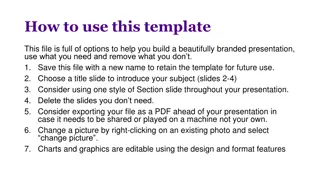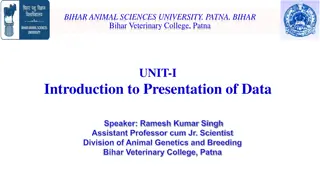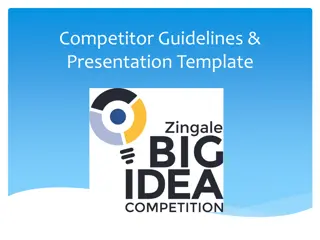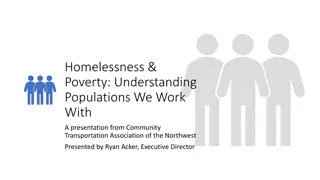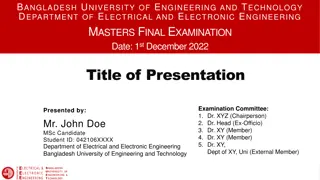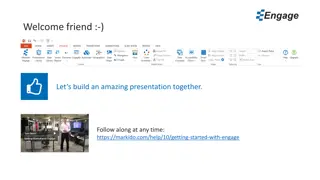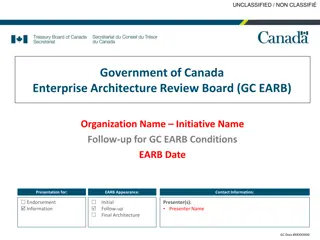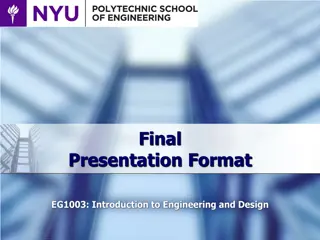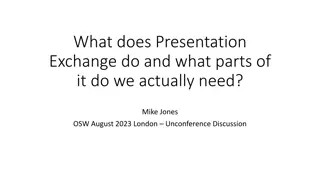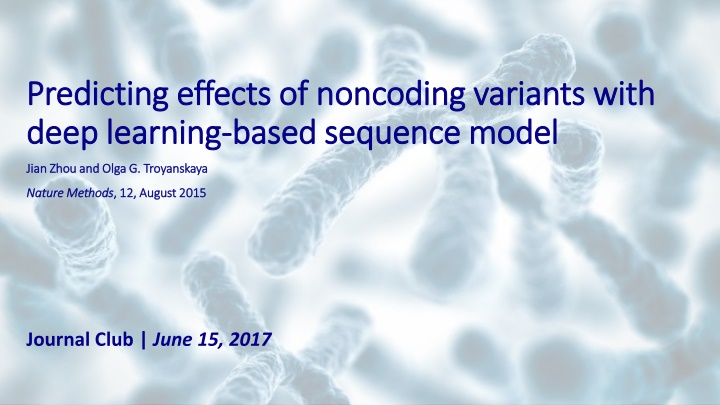
Noncoding Variant Effects Using Deep Learning Models
This study introduces a method to predict the effects of noncoding genetic variants using deep learning-based sequence models. By leveraging techniques like Convolutional Neural Networks (CNN) and regularized logistic regression, the framework aims to prioritize regions lacking sufficient annotation, particularly in disease-related SNPs within noncoding regions. The DeepSEA framework is highlighted for its effectiveness in analyzing spatial features crucial for understanding variant impacts. The use of CNN in this context showcases the power of deep learning in revolutionizing variant prediction, similar to its success in image classification tasks.
Uploaded on | 0 Views
Download Presentation

Please find below an Image/Link to download the presentation.
The content on the website is provided AS IS for your information and personal use only. It may not be sold, licensed, or shared on other websites without obtaining consent from the author. If you encounter any issues during the download, it is possible that the publisher has removed the file from their server.
You are allowed to download the files provided on this website for personal or commercial use, subject to the condition that they are used lawfully. All files are the property of their respective owners.
The content on the website is provided AS IS for your information and personal use only. It may not be sold, licensed, or shared on other websites without obtaining consent from the author.
E N D
Presentation Transcript
Predicting effects of noncoding variants with Predicting effects of noncoding variants with deep learning deep learning- -based sequence model based sequence model Jian Zhou and Olga G. Jian Zhou and Olga G. Troyanskaya Troyanskaya Nature Methods Nature Methods, 12, August 2015 , 12, August 2015 Journal Club | June 15, 2017
Outline Outline Motivation Framework Convolutional Neural Network (CNN) Relative log-fold change Regularized logistic regression Predictive Tasks In silico mutagenesis Chromatin effect prediction SNP Functional prioritization Indel prioritization Strengths & Weaknesses
Motivation Motivation Most disease-related SNPs lie in noncoding regions Historically, coding regions have been given more attention De novo predictions help prioritize in regions with no or poor annotation
Framework Framework Deep learning-based Sequence Analyzer (DeepSEA) DeepSEA Framework Convolutional Neural Network (CNN) Relative log-fold change Regularized logistic regression
Framework Framework Convolutional Neural Network Convolutional Neural Network Works on spatial features where order of features is important Inspired by receptive fields of animal visual cortex One of few approaches that revolutionized Deep Learning Popular for image classification
Framework Framework Convolutional Neural Network Convolutional Neural Network Learning discriminative features automatically Output can be one or many values, depending on network architecture
Framework Framework Convolutional Neural Network Convolutional Neural Network Convolution Step Scanning for each feature Pooling Step Shrinking feature map (~ zooming in), also called subsampling
Framework Framework Convolutional Neural Network Convolutional Neural Network Final layer is usually a fully connected neural network Can be any other classifier, such as SVM as in [Tang, 2013]
Framework Framework Convolutional Neural Network Convolutional Neural Network Number of features, window size for scanning, and other parameters need to be optimized But why does it work on sequence data?
Framework Framework Convolutional Neural Network Convolutional Neural Network Works on spatial features where order of features is important DNA sequences, video frames, images, etc.
Framework Framework Convolutional Neural Network Convolutional Neural Network Works on spatial features where order of features is important DNA sequences, video frames, images, etc. Input: 1000-bp sequence Outputs: Chromatin features 975 values (670 TF binding, 125 DHS, and 104 histone modification values) Hundreds of features to scan for
Framework Framework Convolutional Neural Network Convolutional Neural Network CNN Toy Example | MNIST Digit Classification via TensorFlow in Python [here] Setup on Farnam (~ 5 minutes) [here] Accuracy > 99%
Framework Framework Predictive Tasks Predictive Tasks Chromatin Feature Prediction Training data Genome wide chromatin profiles 670 TF binding, 125 DHS, and 104 histone mark profiles ENCODE and Roadmap Epigenomics 521.6 Mbp (17%) of the genome bound 1+ of 160 chosen TFs Testing Holdout sequences from the genome 4,000 samples from chr7 region 30,508,751-35,296,850
Framework Framework Predictive Tasks | Chromatin Feature Prediction Predictive Tasks | Chromatin Feature Prediction Results TF binding sites | Median AUC = 0.985 DHS | Median AUC = 0.923 Histone modifications | Median AUC = 0.865 SVM-based gkm-SVM TF binding sites | Median AUC = 0.896 Two models: 300-bp & 1000-bp-based
Framework Framework Predictive Tasks | In Predictive Tasks | In S Silico Mutagenesis ilico Mutagenesis Computational generation of all possible SNVs (3x1000 per 1KB input sequence) Validation against disease-related SNPs with experimental evidence Results Accurate prediction of TF binding effects on SNPs with experimentally validated known effects Breast cancer risk locus C-to-T SNP rs4784227 in FOXA1 ?-thalassemia T-to-C creates a binding site for GATA1 Pancreatic agenesis A-to-G mutation has deleterious effect on FOXA2 binding binding site A > C > G > T order Yellow increase in binding Blue decrease in binding
Framework Framework Predictive Tasks Predictive Tasks SNP Functional Prioritization CNN followed by regularized log-reg Sequence & evolutionary features (PhyloP & others) Data Human Gene Mutation Database (HGMD) Noncoding eQTLs from Genome-Wide Repository of Associations between SNPs and Phenotypes Noncoding SNPs from HGRI GWAS Catalog
Framework Framework Predictive Tasks | SNP Functional Prioritization Predictive Tasks | SNP Functional Prioritization Discriminating negative SNPs close to positive (functional) ones AUC (<0.7) lower on this task compared to all 3 previous chromatin effect prediction tasks Relatively low FPR
Framework Framework Predictive Tasks | Predictive Tasks | Indel Indel Prioritization Prioritization Data from HGMD 0.85 > AUC > 0.75
Strengths & Weaknesses Strengths & Weaknesses Strengths First deployment of deep learning methods in variant prioritization De novo predictions for multiple tasks Weaknesses gkb-SVM optimized on 300-bp input sequences, not 1000-bp ones N = 77 sequences only to test for indels SNP functional prioritization is de novo, but not de novo More focus on functionally negative rather than positive SNPs
END END | THANK YOU | THANK YOU


